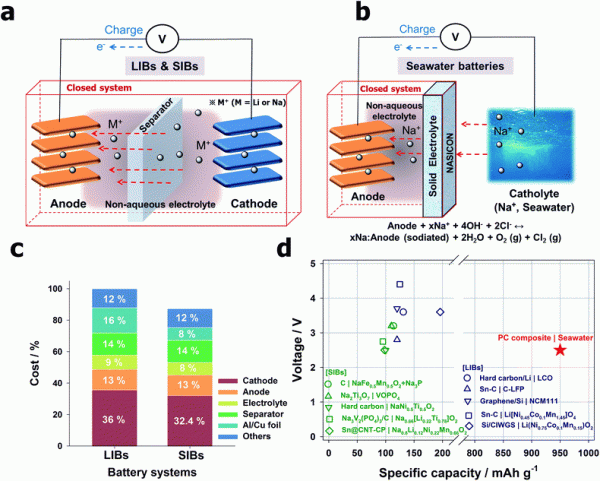High Energy Density for Rechargeable Metal-Free Seawater Batteries: Phosphorus/Carbon Composite as a Promising Anode Material
- Journal
- Journal of Materials Chemistry A
- Vol
- 6
- Page
- 3046-3054
- Year
- 2018
A new energy conversion and storage system, named the ‘seawater battery’, has recently been the subject of research in the field of electrochemistry. Using natural seawater as the catholyte in an open-structured cathode, the battery stores sodium (Na) ions from the seawater into the anode side during charging, and then delivers electricity by discharging on demand. Herein, we report on an amorphous red phosphorus/carbon composite anode material which was successfully employed as the anode of a seawater battery. It exhibited a stable cycling performance with a high reversible capacity exceeding 920 mAh g-1composite with a coulombic efficiency of more than 92% over 80 cycles, as well as good rate capabilities. In terms of the full-cell performance of lithium ion and sodium ion batteries, the seawater batteries with the amorphous red phosphorus/carbon composite anode exhibited the highest reversible capacity and energy density. These results indicate that the use of an open-structured cathode system, which provides the anode with an unlimited supply of Na ions, would allow a seawater battery to overcome the limitations associated with the high-capacity alloying reaction-based anodes used in conventional batteries with a closed system.

